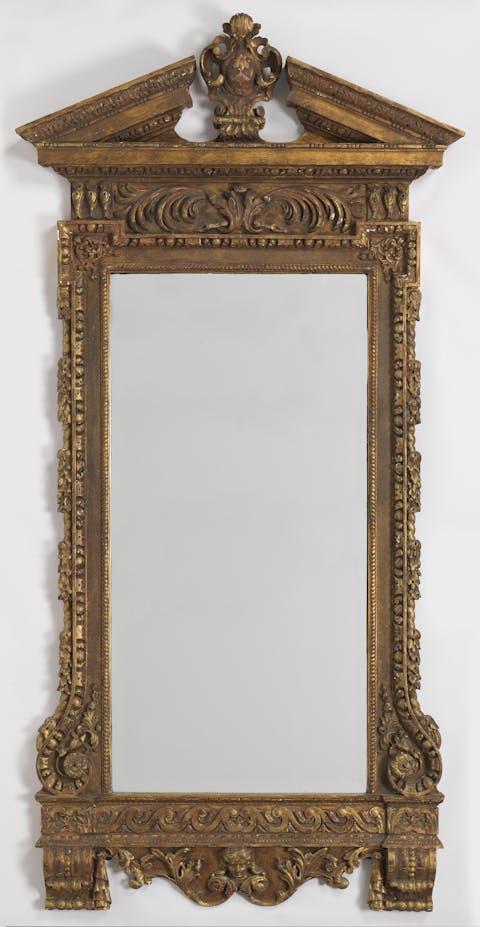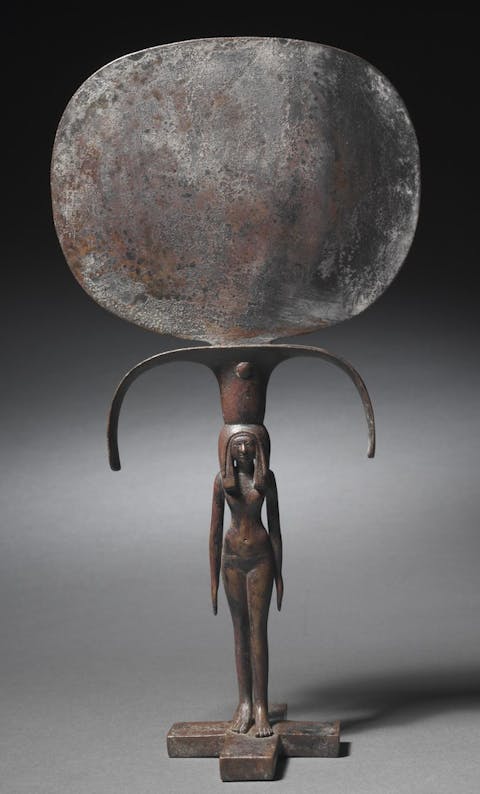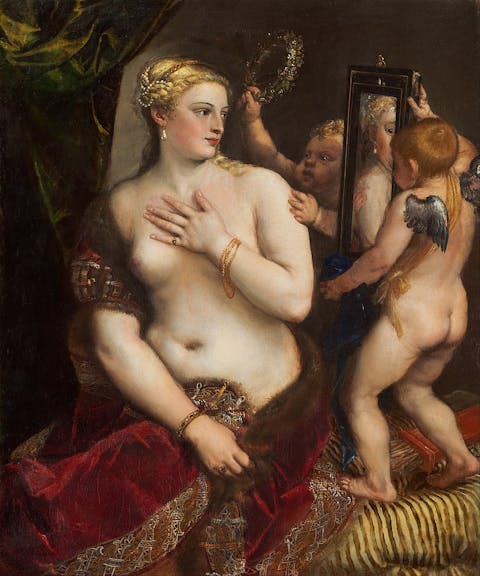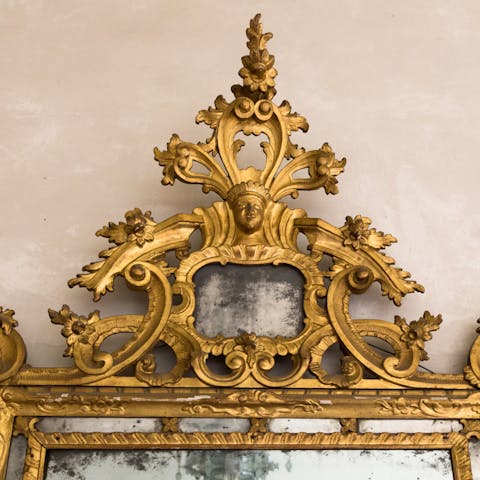How to Appraise Antique Mirrors: Understanding History, Identifying Vintage Mirrors with Expert Tips
According to historians, the concept of mirrors has been around for more than 8000 years. Over the years it was later established as a status symbol. The better the quality, the higher the value. But there are many other interesting details that affect the value. Did you perhaps inherit an heirloom mirror that you would like to have appraised? Is the piece you bought at the flea market worth anything? Read this article to get more knowledge on how to appraise antique mirrors.
Inviting the looker to directly acknowledge oneself and examine the reflected image within its framework, these objects have the power to incite contemplation and introspection. Today people across the world cannot help but be intrigued by the allure that antique mirrors possess, and it's a niche of the market that is consistently popular.
A Brief History of Mirrors
While people have used polished surfaces and flat bodies of water as reflective devices for thousands of years, it was not until relatively recently that mirrors as we understand them today came into existence. In Italy during the 16th century, the first ever ‘looking glasses’, as they were known, were produced from lead glass using a process of creating flat planes from blown cylinders. Throughout the next few hundred years, techniques and methods would be experimented upon in order to create increasingly effective and beautiful surfaces. These objects would become famous across the globe as items of great opulence and luxury, only affordable to the highest echelons of society. As technology further developed and improved throughout the following centuries and methods of production consequently grew faster and cheaper, mirrors would become available to increasingly more people; today, nearly every home across the world has access to these once novel and costly.
Related: Mirrors: A Reflection
How To Tell If a Mirror is Antique or Vintage
For a mirror to be considered antique, it has to have been made more than 100 years ago. However, for it to be labeled as vintage, it has to be between 20 and 99 years old. There are, however, some details to look for if you want to determine if the mirror is antique or not:
– The Glass
Glasses that are used in antique mirrors were all backed with silver mercury backing, which, over time, will create some kind of cloudy look due to oxidation. You often see this around the edges. This is something that can be imitated on new reproduction mirrors that want the antique look. The reproductions often have a more uniform and almost perfect mottled pattern, which differentiates them from authentic antique mirrors.
Follow these easy steps to appraise your antique mirror.
– The Color of the Glass
Another important detail regarding the glass is the color. As with everything – if it's 100+ years old, there will be some slight changes in the colors, even if the item itself is in perfect condition. The glass of antique mirrors is somewhat yellow with a touch of gray. The glass of newer mirrors is color-free.
– The Pen Test
As you can see on the YouTube video in this article, there's a clever test you can do yourself; and all you need is a pen. It's very simple! Take a pen and place it against the glass surface. If it's (very likely) to be an antique mirror, then you'll see the reflection of the pen extremely close to the glass. If it's a modern mirror, then it will look like the pen is an inch, or so, away from the mirror surface.
– The Frame of the Mirror
The frame of the mirror can be a good indicator if it's antique or not. Antique mirrors have handmade frames, while modern mirrors have machine-made frames. The more imperfections you see, the more likely it is to be handmade.

Antique mirror, circa 1910. Tall, rectangular, with carved cartouche and broken-triangular pediment on top, above the acanthus-decorated frieze, shaped base with putti below Vitruvian scroll banding. (Public Domain)
– The Back of the Mirror
As with all antiques, it's always good to examine the back side, as it often can give you more information than the front side. The first thing you should look for is a maker's mark. There can also be some kind of label, inscription, etc. These details could inform you of when the mirror was made.
Other important factors are details such as screws, nails, and hanging fixtures. These need to be original to indicate if it's antique or not. Sure, you sometimes see antique mirrors that've been serviced with new screws, etc. However, screws are a more recent invention, and therefore, it's something you usually don't see in antique mirrors. And let's not forget the back itself. For antique mirrors, the back is generally made of wood, while today, you more often see stiff paper or plastic.
– The Style of the Mirror
The shape and style of the mirror can often indicate what time period the mirror is from. There are plenty of examples. The Baroque style, for example, is often oval-shaped with a gilded frame in gold featuring flowers and cherubs. Another example is the Rococo era, which often is a rectangular mirror with shell motifs and with frames that often came from darker wood. And lately, in the Victorian era, from circa 1800 to 1900, the mirrors were much larger and highly decorated with frames that were often made of metal or dark wood.

Egypt, New Kingdom, Dynasty 18, Caryatid Mirror, c. 1540-1296 BC. Image: Cleveland Museum of Art/ License: Public Domain

Titian, Venus with a Mirror, 1555. Image: Andrew W. Mellon Collection, National Gallery of Art/ License: Public Domain
Condition of a Mirror and its Frame
It is important to first examine the quality of the mirror. Whereas in the case of most collectible items, the more optimal its condition, the more valuable it will likely be, this is not necessarily so when it comes to antique mirrors. If your mirror is perfectly uniform with no color, this is likely indicative that it is a modern mass-produced reproduction and thus less valuable. Whereas the mercury used in antique mirrors will oxidize, causing random cloudy blotches across the surface, especially near its edges. Sometimes, a sign or two of the wear of time can be good. However, if there are any cracks in the surface or damage to the mirror's frame, this will negatively affect your mirror's worth.
Check the Latest Mirror Auctions at Barnebys Here!

Some antique mirrors have very intricate sculptural frames that can be easily damaged and lower the value of a mirror. Image: Canva / license: Public Domain
Age & Rarity of a Mirror
When it comes to mirrors, it is typically the case that older is better. As goes with the fragile and delicate nature of their material, it is rare that a mirror will stand the test of time past several decades, nonetheless a few centuries; Thus, an antique item from the Renaissance will, without exception, be worth a great deal more than even the most expertly produced modern examples. There are a variety of ways to ascertain how old your mirror is. Antique pieces will have wooden backings instead of paper. Oftentimes, there will be a mark indicating the maker and origin. Hand-forged fasteners will be noticeably less uniform than their machine-produced counterparts. The material of the frame can be telling as well; an antique mirror will feature wood, wood veneer, plaster composition, or metal.
Related: Learn About Antique Mirrors

Antique mirror, circa 1685 –1700. (Public Domain)
Are Antique Mirrors Valuable?
In general, antique mirrors cost between $500 to $5,000. However, the variety of prices can be huge. It's individually priced with factors such as age, condition, material, and of course, if the maker is famous. In 1999, Christie's sold an antique mirror for $7.2 million! At the same time, you can find an antique mirror for probably $25 at a flea market.
Where To Find Out The Value of an Antique Mirror?
The most essential measure to take in finding the value of your antique mirror is to seek professional appraisal. While even the most painstakingly thorough amateurs are easily prone to error in the process, a trained expert in the field will be able to take their years of experience and knowledge into account in order to find the most accurate estimate possible. Conveniently enough, you can consult a professional in appraisal and valuation here at Value My Stuff, so that you can find out more about your antique mirror as soon as you deem necessary. Start an Appraisal of Your Antique Mirror Here!

